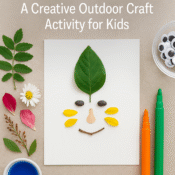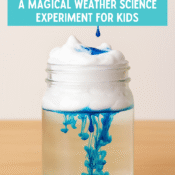
Parent Hacks That Work: Clever Builds from Real Homes
Everyday Engineering from Around the World
Not all inventions come from factories—some of the smartest ones are created in kitchens, courtyards, or tool sheds. Around the world, parents are quietly building clever solutions to help their families handle natural disasters, seasonal weather, and limited resources.
In this edition of Global Parent Picks, we feature three functional DIY hacks from real households in Mexico, the Netherlands, and India—each blending cultural insight with hands-on problem solving. These designs don’t just “make do”—they make better.
Why These Hacks Matter
DIY builds aren’t just about saving money—they reflect creativity under pressure. These projects:
- Solve everyday problems using local materials
- Strengthen kids’ resilience and critical thinking
- Connect traditional knowledge with modern-day needs
- Foster family bonding through collaborative design
By learning how other families innovate, children gain global perspective and confidence to create their own fixes. Plus, they begin to see problems as opportunities for invention.
Project 1: Anti-Quake Door Jam + Earthquake Prep Game Board (Mexico)
Problem: Earthquakes disrupt homes and frighten children. Many homes lack access to safety equipment, and commercial solutions can be expensive or hard to find.
Parent Solution: A soft, flexible door wedge that keeps doors from slamming or jamming during tremors, paired with a playful laminated floor game that teaches kids what to do when a quake hits.
Cultural Insight: In central and southern Mexico, earthquake drills are common in schools, but less consistent at home. One parent in Oaxaca shared that their child panicked during an actual quake because they didn’t know where to go. Their solution was to turn preparedness into a game.
Make It Yourself:
- Cut thick rubber (old yoga mats work well) into triangle-shaped wedges
- Use permanent markers to draw faces or directional arrows to make them kid-friendly
- On cardboard or laminated poster board, draw a floorplan of a home or classroom
- Use toys or bottle caps to simulate evacuation routes between marked safety zones
- Add dice or spinner for a movement-based drill

What Kids Learn:
- What to do during an earthquake
- Confidence through repetition and routine
- How to stay calm through play
Discussion Questions:
- Where is the safest place to be in our home?
- What would you pack in an emergency bag?
Level Up Option: Add battery-powered candles to practice drills in the dark.
Project 2: Wind-Powered Handwashing Station (Netherlands)
Problem: Children often skip handwashing, especially when outdoors. Families wanted a playful, off-grid way to make hygiene memorable.
Parent Solution: A weather-inspired outdoor sink using a mini windmill. When children spin the blades, water dispenses gently, creating a satisfying connection between effort and outcome.
Cultural Insight: In the Dutch countryside, families embrace outdoor play—even in muddy weather. One father in Friesland turned a leftover greenhouse pump and his daughter’s paper pinwheel into an ingenious handwashing system after a camping trip left everyone grubby.
Make It Yourself:
- Use a 2L bottle or jug as a water reservoir
- Attach tubing connected to a small manual or solar pump
- Mount a pinwheel (store-bought or handmade from paper and skewers) that can spin in the breeze
- When the wheel turns, it either triggers a lever or encourages kids to pump water themselves
- Use recycled wood or crate to raise the basin

What Kids Learn:
- Cause-and-effect in engineering
- Conservation through fun
- That hygiene can be joyful
Discussion Questions:
- Where else could wind power help us?
- How can we make handwashing more fun indoors?
Level Up Option: Add colourful soap foam with scents for seasonal fun (lavender for spring, orange for autumn).
Project 3: Recycled Plastic Hammock Mat (India)
Problem: During monsoon season or summer heatwaves, families may need lightweight, breathable sleeping surfaces that don’t trap heat or take up floor space.
Parent Solution: A cooling mat for kids woven from recycled snack wrappers and soft rope—light enough to hang like a hammock or roll out on the ground.
Cultural Insight: A mother in rural Maharashtra described how her family recycled old saris and chip packets to make sleep mats when extra guests arrived. What began as a necessity became a tradition—and eventually, a lesson in resourcefulness for her children.
Make It Yourself:
- Wash and flatten clean foil snack packets (inside-out silver side preferred)
- Cut into long strips and twist into yarn, or braid directly
- Use soft cotton string or rope to weave in cross-sections
- Attach loops at the ends and fix to bamboo rods or reused broomsticks

What Kids Learn:
- Sustainability in textiles
- Traditional weaving skills
- That comfort can be handmade
Discussion Questions:
- What materials around your home could be turned into something useful?
- How does the mat feel compared to store-bought bedding?
Level Up Option: Add a sewn pocket for storybooks or a small lantern.
Quick Swaps
If you’re short on time or supplies, try:
- Paper Quake Drill Game: Draw a dice-based room map and race to the “safe spot”
- Bottle Balance Station: Stack plastic cups and blow with straws to test wind power
- Fabric Weaving Practice: Use old t-shirts, rags, or plastic bags on a cardboard loom
These fast variations still carry strong STEM and life skills.
Extend the Learning
Want to turn these projects into deeper learning?
- Invite grandparents to share how they solved household problems with what they had
- Create a “Fix-It Wall” in your home where kids can sketch or describe improvements
- Visit local repair shops or flea markets to look for repurposed inventions
- Start a mini-family challenge: One problem, One day, One solution
Books to Explore:
- The Red Bicycle by Jude Isabella (true story of global reuse)
- Kids Who Are Changing the World by Anne Jankeliowitch
- Trash to Treasure activity books for sustainable crafting
Watch and Discuss:
- YouTube: “Simple Inventions That Work” (global makers)
- BBC Micro:bit DIY tech series
- Short films from UNICEF on low-cost community innovations
Make What You Need
When parents solve problems using what’s already around them, they empower kids to think differently. Whether it’s a windmill water tap or a mat made from foil, these solutions show that families everywhere are full of everyday genius.
Ask your child: “What’s one problem at home we could fix without buying anything?”
Encourage them to draw, build, and share their own fixes—because innovation begins at home.
Share your creations or remix one of these at kids-activities.net.
Free Downloads
Parent Hacks That Work Activity Pack (PDF) Includes: Anti-Quake Jam + Drill Game Board Template, Wind Wash Station Build Sheet, and Hammock Mat Weaving Instructions + Quick Swaps




